 In support of their Blitzkrieg tactics, Germany took full advantage of their newly built boulevards and autobahn road networks to quickly and easily move mechanized material from the factory floor to the front. Mobility was key in the Blitzkrieg, and one integral cog in Reich’s mechanized war machine was the Faun heavy transporter. The Faun L900, manufactured from 1937 to 1939, was one of the heaviest German trucks in service during WW2, weighing in at an impressive 8,800 kilograms, measuring 10,4 meters in length and with a cargo capacity of 10,000 Kg, the Faun L900 and SdAh 115 trailer were perfectly suited to carry the lighter weight tanks of the time (Pz.1, Pz.II, Pz.,38). In later years, the necessity of war required that divisions replace their light tanks with heavier armor, and with that, the Faun’s armor transport services came to a conclusion. The vehicles, however, remained in active service throughout the war on all front working to troops and other lighter vehicles.
In support of their Blitzkrieg tactics, Germany took full advantage of their newly built boulevards and autobahn road networks to quickly and easily move mechanized material from the factory floor to the front. Mobility was key in the Blitzkrieg, and one integral cog in Reich’s mechanized war machine was the Faun heavy transporter. The Faun L900, manufactured from 1937 to 1939, was one of the heaviest German trucks in service during WW2, weighing in at an impressive 8,800 kilograms, measuring 10,4 meters in length and with a cargo capacity of 10,000 Kg, the Faun L900 and SdAh 115 trailer were perfectly suited to carry the lighter weight tanks of the time (Pz.1, Pz.II, Pz.,38). In later years, the necessity of war required that divisions replace their light tanks with heavier armor, and with that, the Faun’s armor transport services came to a conclusion. The vehicles, however, remained in active service throughout the war on all front working to troops and other lighter vehicles.
Kharkov StuG
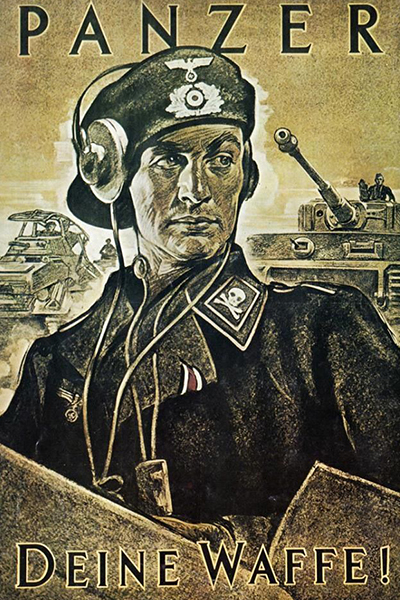 If “sexy” is an appropriate word to use to describe a lethal military vehicle, then the StuG certainly deserves a walk on the modeler catwalk. It’s attractive, low profile, and aggressive wide stance certainly demands a second glance. Add a pair of Ostketten tracks to the outfit and, at least in my eyes, the StuG is a thing of beauty.
If “sexy” is an appropriate word to use to describe a lethal military vehicle, then the StuG certainly deserves a walk on the modeler catwalk. It’s attractive, low profile, and aggressive wide stance certainly demands a second glance. Add a pair of Ostketten tracks to the outfit and, at least in my eyes, the StuG is a thing of beauty.
When this opportunity came to contribute a StuG for this publication, I had a wide choice of variants and time periods. My decision of which variant to build was almost immediate, I wanted to portray a vehicle from the desperate and pitched Kharkov battles during the winter of 1942-1943. This time frame led to a number of choices, in the end, I decided upon the StuG III f/8 variant as produced by Dragon.
The Ausf. F production of the StuG III began March, 1942 and was a direct reaction to the war experiences for the need to find a foe to combat Russian tanks, specifically the T-34. Equipped with the high velocity of 7.5 cm StuK 40 L/43 long barrel gun, the upgraded platform proved to be an instant influence on the battlefield. The Ausf. F/8 version of the StuG appeared in September of 1942. The name is derived from the chassis version of the Panzer III upon it was based, the 8th, or Ausf J/L. The F/8 entered production armed with the new 7.5cm StuK 40 L/48, which had a greater impact against the most common tank of the time, the T34. The new hull featured a redesigned rear-plate, with larger louvers to improve engine cooling. which jutted slightly forward of the front of the hull, and were drilled with holes for towing. Initially designed to be a welded plate of front armor, during the production run of the F/8 the extra armor went from being welded in place to being bolted on, in order to save production time.
For the Motherland
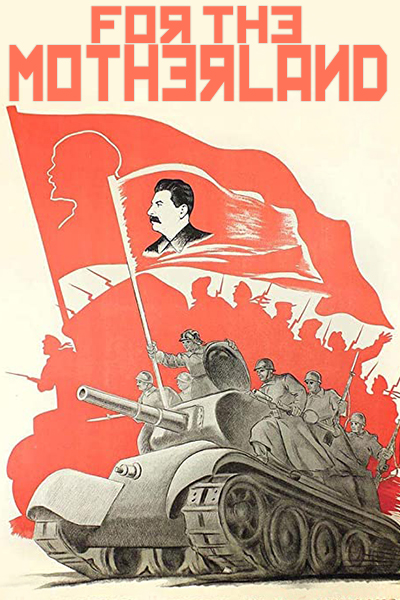 When it comes to armored warfare and the history of WWII, the T34 (and it’s variants) deserve an extra thick chapter any book that chronicles defeat of Nazi Germany – and afterward. In 1942, Adolf Hitler is reported to say to his military staff at his Wolf’s Lair headquarters in East Prussia, “If I had known that there were so many of them, I would have had second thoughts about invading!”
When it comes to armored warfare and the history of WWII, the T34 (and it’s variants) deserve an extra thick chapter any book that chronicles defeat of Nazi Germany – and afterward. In 1942, Adolf Hitler is reported to say to his military staff at his Wolf’s Lair headquarters in East Prussia, “If I had known that there were so many of them, I would have had second thoughts about invading!”
The “them” he was referring to was the Soviet Red Army T-34, the now-iconic tank that had come as such a nasty surprise to the Germans in the summer of 1941. The T34, and it’s variants continued to be a thorn in the side of the German’s throughout the war, ultimately rolling onto the streets of a shattered Berlin in April of 1945.
Drs. Matthew Hughes and Chris Mann in their 2002 work The T-34 Russian Battle Tank noted, “The presence of the T-34/76 in 1941 proved to be a rude shock for the Germans. Compared to other Soviet tanks, the T-34 was able to take on and destroy the best of the German panzers. In various modifications—and despite some setbacks—the T-34 held its own until the war’s end in the ruins of Berlin in 1945.”
Burn Baby Burn
 I have been a fan of the Mad Max movie series since inception beginning with the 1979 release of Mad Max, up through and including the recent Fury Road release. And as such, this is the backdrop for this dystopian, Post-apocalyptic vehicle overhaul. At first glance, it might appear that all of the crazy looking vehicles that appear in this movie world are nothing more than reconstituted junk-yard heaps, cobbled together without regard to form or function. However, on closer examination, it is clear each vehicle within the films are unique, thought-out, and serves a purpose. I recall reading one of the concept artists state that what one must understand is that these vehicles are a symbol of personal pride and craftsmanship, an extension of their personalities. In the end, what you have, are a bunch of very cool looking cars!
I have been a fan of the Mad Max movie series since inception beginning with the 1979 release of Mad Max, up through and including the recent Fury Road release. And as such, this is the backdrop for this dystopian, Post-apocalyptic vehicle overhaul. At first glance, it might appear that all of the crazy looking vehicles that appear in this movie world are nothing more than reconstituted junk-yard heaps, cobbled together without regard to form or function. However, on closer examination, it is clear each vehicle within the films are unique, thought-out, and serves a purpose. I recall reading one of the concept artists state that what one must understand is that these vehicles are a symbol of personal pride and craftsmanship, an extension of their personalities. In the end, what you have, are a bunch of very cool looking cars!
My wasteland is my workbench, and upon it rides a Revell/Monogram 1966 Chevy Fleetside pickup truck. I chose this vehicle for no other reason than my dad had one of these when I was young, and I like the way it looks. What would it become? Fingers grip tight around the X-Acto, the smell of glue surrounds me. Strap in and let’s ride! Burn, Baby Burn!
Mobile Worker MW-01 Late Type [MASH]
 The Mobile Worker MW-01 Model 01 Final Type is a mobile weapon that appears in the Mobile Suite Gundam: The Origin OVA . It belonged to the Autonomous Republic of Zeon and would ultimately lead to the development of the mobile suit technology.
The Mobile Worker MW-01 Model 01 Final Type is a mobile weapon that appears in the Mobile Suite Gundam: The Origin OVA . It belonged to the Autonomous Republic of Zeon and would ultimately lead to the development of the mobile suit technology.
On the dark side of space colony Side 3, the last improved and developed Mobile Worker MW-01 Model 01 Final Type, a prototype experimental man-made mobile weapon led by Dozle Zabi was under development. Improvements have been made to each part based on the data from the Mobile Worker MW-01 Model 01 Late Type, and opinions from the test pilots. Improvements were made on the chest armor around the cockpit to protect the pilot from incoming attacks.
The space version is equipped with thrusters and verniers for attitude control in outer space on the shoulders, back, torso and legs, and was used by the Autonomous Republic of Zeon in the recovery of space debris in its neighboring zones. Its attitude control technology and operational data in space were used as a reference in the development of mobile suits.
Rommel’s Ride
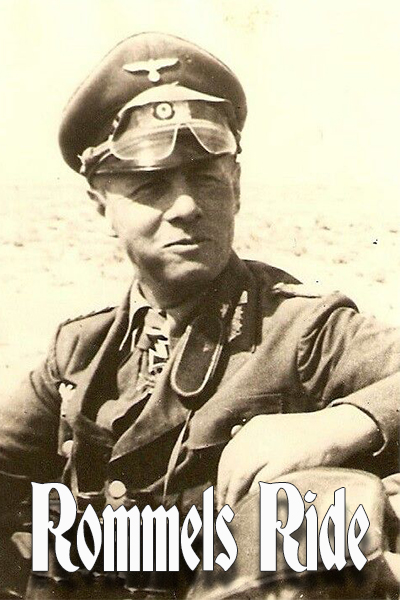 The German war reporter Fritz Lucke descried the AEC Dorchester as; “An armored box as big as a bus, on a giant balloon tires as big and fat as the undercarriage wheels of a Junkers transport plane. The walls are windowless and painted in blue-grey camouflage shades. Only the driver and his co-driver have windshields, protected behind armored visors”.
The German war reporter Fritz Lucke descried the AEC Dorchester as; “An armored box as big as a bus, on a giant balloon tires as big and fat as the undercarriage wheels of a Junkers transport plane. The walls are windowless and painted in blue-grey camouflage shades. Only the driver and his co-driver have windshields, protected behind armored visors”.
Based upon the Matador, The AEC “Dorchester”, the name coined by the British, was used by the British armored formation from 1941 onward through the 1950’s as a radio and command vehicle. During the desert campaign of WWII, at least three of these cars were captured by German forces and presented to Rommel’s HQ. Renamed “Mammoths” by the Germans, the first two vehicles most likely were captured from the British 2nd armored division. Upon seeing the captured vehicles Rommel is reported to have said; “Booty is permissible I assume, even for a general”. The Germans named one of the vehicles “Moritz” and the other “Max”, after children’s fairy tale figures. Max is the subject of this article.
Pulling Power – Holt 75 Tractor
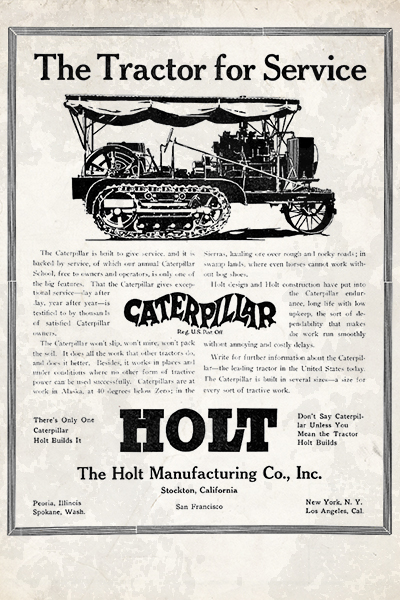 I recently took a bit of a break from my usual modeling subjects, those being armor, armored cars, and other types of earthly vehicles and instead dabbled in the world of those winged things, specifically a couple of WW1 aircraft. It was a nice and needed change of pace. One of the takeaways from that experience was the process of working on the many subassemblies, each as a separate little jewel of a model – from construction through painting and even weathering – and then moving onto the next element until finally it’s brought all together.
I recently took a bit of a break from my usual modeling subjects, those being armor, armored cars, and other types of earthly vehicles and instead dabbled in the world of those winged things, specifically a couple of WW1 aircraft. It was a nice and needed change of pace. One of the takeaways from that experience was the process of working on the many subassemblies, each as a separate little jewel of a model – from construction through painting and even weathering – and then moving onto the next element until finally it’s brought all together.
This now brings me to this current project, Roden’s release of the Holt 75 tractor. As with so many early 20th-century war machines, the Holt 75 began its career in civilian service as an agricultural tractor but came into its’ own while being utilized during the construction of the Los Angeles aqueduct system beginning in 1909. With the outbreak of WW1, there was a need for heavy prime movers to haul around the Queens of the Battlefield, the heavy artillery pieces. Durable, able to maneuver over uneven terrain, and readily available, the British War Department placed orders for the tractor, of which some 2000 saw service with the British, French and American forces 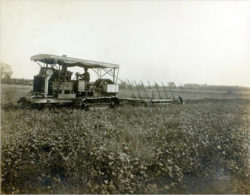 during the course of the war.
during the course of the war.
Flying Dutchman : Fokker DVII
 When World War I ended in 1918, the Armistice required, among other things, that Germany turns over 1,700 warplanes, including “all D.VII’s.” Thus did the Allies compliment the boyish Dutchman whose highly maneuverable fighter plane, (the Fokker D.VII) boasted machine guns that could fire through a whirling propeller without hitting it. And thanks to the inventive Anthony Fokker and the Fokker D.VII, German aces terrorized Allied pilots in the closing months of the war; and the victors wanted to monopolize that fearsome technology.
When World War I ended in 1918, the Armistice required, among other things, that Germany turns over 1,700 warplanes, including “all D.VII’s.” Thus did the Allies compliment the boyish Dutchman whose highly maneuverable fighter plane, (the Fokker D.VII) boasted machine guns that could fire through a whirling propeller without hitting it. And thanks to the inventive Anthony Fokker and the Fokker D.VII, German aces terrorized Allied pilots in the closing months of the war; and the victors wanted to monopolize that fearsome technology.
Fokker was surely some kind of genius. He taught himself to fly, then to build flying machines.. This was in 1911, when he was 21, just eight years after the Wright Bros. invented powered flight. His ambition took flight as well. Upon the onset World War I, he applied for German citizenship because that was a requirement if he was to sell aircraft to the German air force. During the First World War, the Dutchman Anthony Fokker built airplanes first at his factory located at the Johannisthal airfield, near Berlin. In 1913 he moved to Schwerin. During these years, many types were designed and build there, among which was the famous ‘Eindecker’ series, and the Dr.I triplane. At the end of 1917, Fokker was out of the picture as a supplier for fighter aircraft. This is the time where the story of the D.VII starts.
Mono-Wing & a Prayer
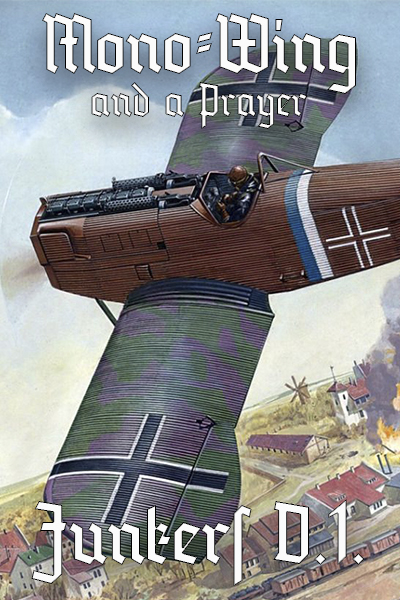 Professor Hugo Junkers was one of the great revolutionaries in the history of aviation development. Junkers became a professor of mechanical engineering at Aachen University in 1897, where he remained until 1912, after having invented and patented gas engines, heaters, and a calorie meter among other inventions. He went full-time into aeronautical work in 1912 at age 50, when he became convinced that the future of aviation lay in the development of all-metal aircraft of advanced design, such as flying wings. Unfortunately for Junkers, two years later war broke out and the only way he could obtain the necessary funding for his work was to develop warplanes, a task he personally hated.
Professor Hugo Junkers was one of the great revolutionaries in the history of aviation development. Junkers became a professor of mechanical engineering at Aachen University in 1897, where he remained until 1912, after having invented and patented gas engines, heaters, and a calorie meter among other inventions. He went full-time into aeronautical work in 1912 at age 50, when he became convinced that the future of aviation lay in the development of all-metal aircraft of advanced design, such as flying wings. Unfortunately for Junkers, two years later war broke out and the only way he could obtain the necessary funding for his work was to develop warplanes, a task he personally hated.
 In 1915, Junkers created the world’s first practical all-metal aircraft design, the Junkers J.1, known as the “Blechesel” (Sheetmetal Donkey), which first flew in January 1916. This was eventually developed into an armored ground attack airplane that was virtually impervious to ground fire when it appeared during the great 1918 Offensive.
In 1915, Junkers created the world’s first practical all-metal aircraft design, the Junkers J.1, known as the “Blechesel” (Sheetmetal Donkey), which first flew in January 1916. This was eventually developed into an armored ground attack airplane that was virtually impervious to ground fire when it appeared during the great 1918 Offensive.
Where the Streets Have No Name
 As military modelers we often throw around the phrase; “living in the golden age of modeling”. And while it is certainly true that the variety and quality of the kits that are now available are mind-blowing, perhaps a more accurate term might be “accessibility”, meaning, that our access to real-life and real-time “inspiration” (for lack of a better term) is now unprecedented. The world is at our fingertips by simply logging into our Facebook feed, watching a YouTube video or by joining any one of the many specialized groups, we are provided with unfiltered access to world events. I wouldn’t imagine that when Trumpeter released the Russian 2S3 Akatsiya in 2013, they had any idea that these vehicles recent “claim to fame” would be in the deadly, close-quarter urban battlefields of Syria. However, here it is – from the pictures and YouTube videos coming out of Syria that I found inspiration for my take on this Russian-built heavy hitter.
As military modelers we often throw around the phrase; “living in the golden age of modeling”. And while it is certainly true that the variety and quality of the kits that are now available are mind-blowing, perhaps a more accurate term might be “accessibility”, meaning, that our access to real-life and real-time “inspiration” (for lack of a better term) is now unprecedented. The world is at our fingertips by simply logging into our Facebook feed, watching a YouTube video or by joining any one of the many specialized groups, we are provided with unfiltered access to world events. I wouldn’t imagine that when Trumpeter released the Russian 2S3 Akatsiya in 2013, they had any idea that these vehicles recent “claim to fame” would be in the deadly, close-quarter urban battlefields of Syria. However, here it is – from the pictures and YouTube videos coming out of Syria that I found inspiration for my take on this Russian-built heavy hitter.
